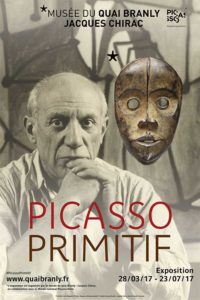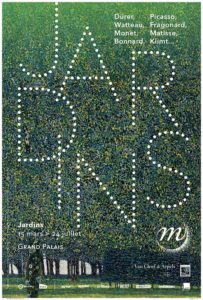 Picasso said he experienced a “revelation” while viewing African art at Paris’ Palais du Trocadéro ethnographic museum. “A smell of mould and neglect caught me by the throat. I was so depressed that I would have chosen to leave immediately. But I forced myself to stay, to examine these masks, all these objects that people had created with a sacred, magical purpose, to serve as intermediaries between them and the unknown, hostile forces surrounding them, attempting in that way to overcome their fears by giving them colour and form. And then I understood what painting really meant. It’s not an aesthetic process; it’s a form of magic that interposes itself between us and the hostile universe, a means of seizing power by imposing a form on our terrors as well as on our desires. The day I understood that, I had found my path.” His discovery that day of African art resulted in what became his “African” style (1906-1909) and his iconic “Les Demoiselles d’Avignon.” Continue reading “Primitive Picasso in Paris”
Picasso said he experienced a “revelation” while viewing African art at Paris’ Palais du Trocadéro ethnographic museum. “A smell of mould and neglect caught me by the throat. I was so depressed that I would have chosen to leave immediately. But I forced myself to stay, to examine these masks, all these objects that people had created with a sacred, magical purpose, to serve as intermediaries between them and the unknown, hostile forces surrounding them, attempting in that way to overcome their fears by giving them colour and form. And then I understood what painting really meant. It’s not an aesthetic process; it’s a form of magic that interposes itself between us and the hostile universe, a means of seizing power by imposing a form on our terrors as well as on our desires. The day I understood that, I had found my path.” His discovery that day of African art resulted in what became his “African” style (1906-1909) and his iconic “Les Demoiselles d’Avignon.” Continue reading “Primitive Picasso in Paris”











 Paris’ Jeu de Paume hosts a major exhibition this autumn titled “Soulevement,” which translates from French as “Uprisings” (to January 15, 2017). This multimedia exhibition—paintings, video, books, photography— curated by philosopher and art historian Georges Didi-Huberman, reflects on revolts, resistance and protest from Francisco de Goya’s “Los Caprichos (1799) to Maria Koukouta’s (2016) video loop showing immigrants crossing the Greek-Macedonia border.
Paris’ Jeu de Paume hosts a major exhibition this autumn titled “Soulevement,” which translates from French as “Uprisings” (to January 15, 2017). This multimedia exhibition—paintings, video, books, photography— curated by philosopher and art historian Georges Didi-Huberman, reflects on revolts, resistance and protest from Francisco de Goya’s “Los Caprichos (1799) to Maria Koukouta’s (2016) video loop showing immigrants crossing the Greek-Macedonia border. 